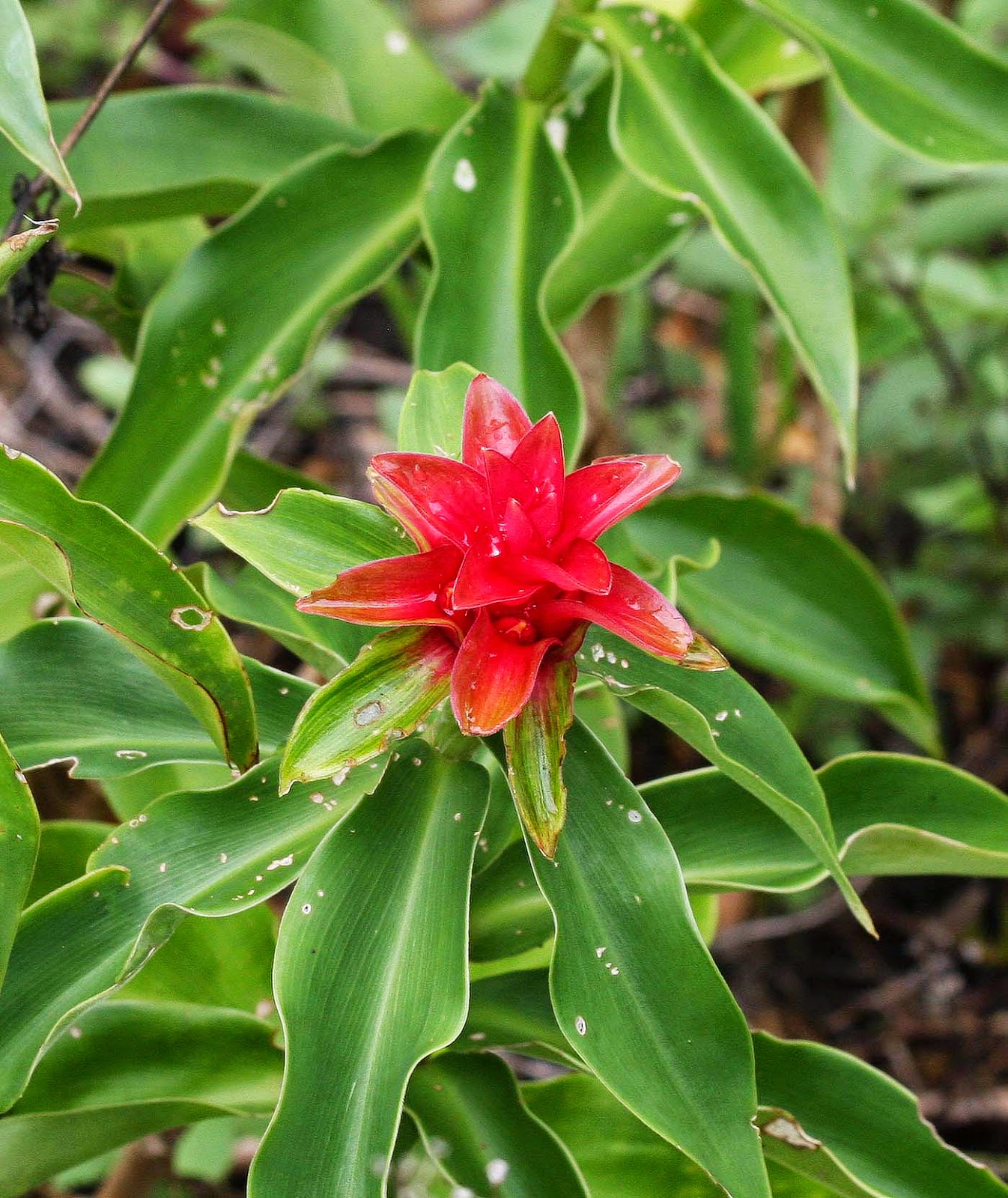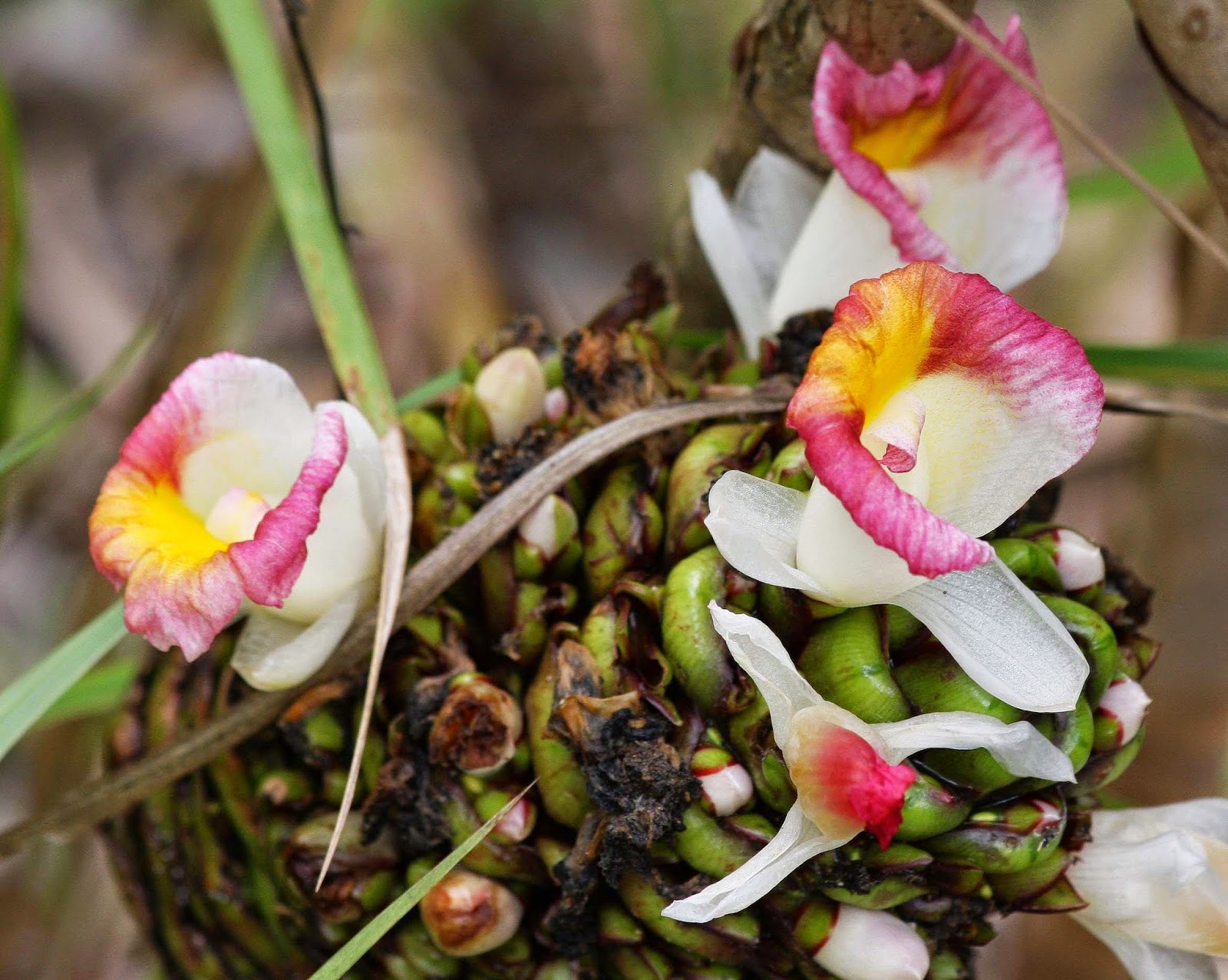 |
| A little Costa Rican Ginger |
 |
| The Green Beehive Gingers in bloom. |
 |
| The culinary Ginger is building up to full steam. |
 |
| Another Beehive Ginger. |
 |
| The classic Chocolate Beehive Ginger |
The nice thing about the gingers is that they enjoy a damp and shady spot where little else will thrive and they seem to attract a lot of insects, which makes them very popular with the Fairy Wrens.
I have been really pleased with the lilies this year. We lost a lot of the native Blue Lilies to the Plumed Whistling Ducks, but the hybrid lilies on the Lap Swamp have been gorgeous. The dams in particular have been great fun due to the sheer number of Dragon and Damselflies that have appeared. They have always been fairly common, but this year has been exceptional and these stunning insects have been out in force.
 |
| A Blue Skimmer (orthetrum caledonicum) in an unusual pose, but he seems happy. |
 |
| A Scarlet Percher (diplacodes haematodes) having a rest. |
 |
| Another Scarlet Percher |
 |
| An Australian Tiger (ictinogomphus australis) |
 |
| A Yellow-striped Flutterer (Rhyothemis phyllis) |
 |
| An Australian Tiger poised to pounce. |
 |
| Duel docking stations for a Scarlet Percher and an Australian Tiger. |
 |
| An Australian Emperor Dragonfly (Hemianax papuensis) |
 |
| A Yellow Striped Flutterer again. |
 |
| Blue-tailed Damselflies mating (ischnura elegans) |
 |
| The male grasps the female's neck with his anal claspers during mating. |
 |
| A Blue Skimmer enjoys the sun |
 |
| The Australian Tiger showing both the club tail and anal claspers. |
 |
| More damselflies enjoying a ride on a lily pad. |
I have no idea why I bothered to add their Latin names, it just seemed the thing to do when showing dragonflies...strange.
The marginal plants, especially the Violet Thalia have been blooming as well, attracting even more birds and insects to the summer feasts.
 |
| Yellow-faced Honeyeater on the Violet Thalia |
Turning to the birds, the range of birds is up on last year and what isn't really indicated in the lists is the numbers of birds that have been appearing. The Plumed Whistling Duck numbers have decreased to a far less damaging half dozen or so, but the Leaden Flycatchers and White-throated Honeyeaters have been out in force. The big mover has been the Peaceful Doves that have been everywhere. This may be due to the fact that I've avoided cutting back the grass so far as I haven't wanted to disturb the nesting Purple Swamphens. The dam wall is looking like a complete jungle at the moment, but as the huge grasses have started seeding the smaller seed eaters such as the Peaceful Doves and Red-browed Finches have cashed in on the available food supply.
 |
| Red-browed Finch playing with a feather. |
At which point I shall move onto the lists...
Regulars (seen at least 5 days in the week)
Bar-shouldered Dove
Bronzewing
Double-barred Finch
Galah
Little Corella
Olive-backed Oriole
Pacific Black Duck
 |
| Mumma Duck and her growing ducklings enjoy (or not) the summer shower |
Peaceful Dove
 |
| Peaceful Doves in the Silky Oak |
 |
| Plumed Whistling Duck and a pair of Pacific Blacks sitting on the side of the dam. |
Purple Swamphen
 |
| Purple Swamphens mating. It's actually a lot less frenetic than it looks. |
Rainbow Lorikeet
Spangled Drongo
Torresian Crow
White-throated Honeyeater
Wood Duck
 |
| A Pair of Wood Duck drakes chilling on the Lap Swamp |
Yellow-faced Honeyeater
 |
| Yellow-faced Honeyeater enjoying nectar from the Marmalade Grevillia |
Common (Seen at least twice a week)
Australian Magpie
Brown Honeyeater
 |
| Brown Honeyeater startled in a Grevillea. |
Channel-billed Cuckoo
Grey Shrike Thrush
King Parrot
 |
| Immature King Parrots at one of the feeding stations |
Laughing Kookaburra
Leaden Flycatcher
 |
| A male Leaden Flycatcher taking a break. They are normally very active and quite noisy little birds. |
Noisy Friarbird
Pale Headed Rosella
Pied Currawong
Red-browed Finch
Welcome Swallow
Uncommon (Seen two to five times during the month)
Azure Kingfisher
 |
| Azure Kingfisher shouting at the fish? |
Black-faced Cuckoo Shrike
Eastern Yellow Robin
Forest Kingfisher
 |
| A Forest Kingfisher enjoys the last rays of sun for the day. |
Lewins Honeyeater
Magpie Lark
Noisy Miner
Pied Butcherbird
Red-backed Fairy Wren
Rufous Whistler
Sacred Kingfisher
Variegated Fairy Wren
White-throated Gerygone
White-throated Treecreeper
Rare (Seen only once)
Black-faced Monarch
Brown Goshawk
Bush Turkey
Cicadabird
Crested Pigeon
Fairy Martin
Figbird
Grey Butcherbird
Little Black Cormorant
Little Wattlebird
Scaly-breasted Lorikeet
 |
| Scaly Breasted and Rainbow Lorikeets in the Silky Oak |
Silvereye
Striated Pardalote
Varied Sitella
 |
| The very small and very fast Varied Sitella. |
Wedge-tailed Eagle
Willie Wagtail
White-faced Heron
Yellow-tailed Black Cockatoo
Which is 61-species, four up from last year.



